Asmodeus (aka Asmoday, Asmodee) is one of the most notorious demons in the history of religions and cultures. He is often depicted as a monstrous creature with three heads, a serpent’s tail, webbed feet, and fiery breath. He is associated with lust, wrath, destruction, and temptation. He has appeared in various texts and stories, from ancient Zoroastrianism to medieval Jewish mysticism, from Christian apocrypha to modern occultism. In this article, we will explore the origins, attributes, and legends of Asmodeus, the demon who has fascinated and terrified people for centuries.
The Name and Nature of Asmodeus
The name “Asmodeus” is probably derived from the Persian aēšma-daēva, which means “demon of wrath.” Aeshma is a prominent demon in Zoroastrianism, the ancient religion of Persia. He is the personification of wrath, violence, and deception, and he opposes the good creation of Ahura Mazda, the supreme god. He is mentioned in the oldest Zoroastrian texts, the Gathas (Yasna 29:2 and 30:6), as a source of evil and harm for humanity. He is also the only demon named in the Gathas, which shows his importance in the Zoroastrian worldview.
In later Zoroastrian texts, Aeshma is depicted as a fierce and bloodthirsty warrior who wields a club (Yasht 10:97). He is one of the chief agents of Angra Mainyu, the evil spirit who opposes Ahura Mazda. He often fights against the good deities, especially Mithra (Yasht 10:97), the god of light and justice, and Shraosha (Yasht 11: 15), the god of obedience and worship. He also tries to corrupt and destroy the followers of Zoroaster, the prophet of Zoroastrianism. He is involved in many legendary battles and conflicts, such as the killing of Yima (Pahlavi Rivayat 56: 13-15), the first king of humanity, and the attack on Vishtaspa (Dēnkard Book 8), the patron of Zoroaster. His is also known to make men drunk (Yasna 10:8).
Aeshma’s name and nature may have influenced Jewish and Christian writers, who transformed him into Asmodeus, one of the chief demons in their traditions. Asmodeus inherited some of Aeshma’s characteristics, such as his wrathful and violent disposition, his opposition to God and his prophets, and his leadership of other evil spirits. However, he also acquired new features that made him more distinct and formidable. One of these features was his association with lust and sexuality.
Asmodeus in The Book of Tobit
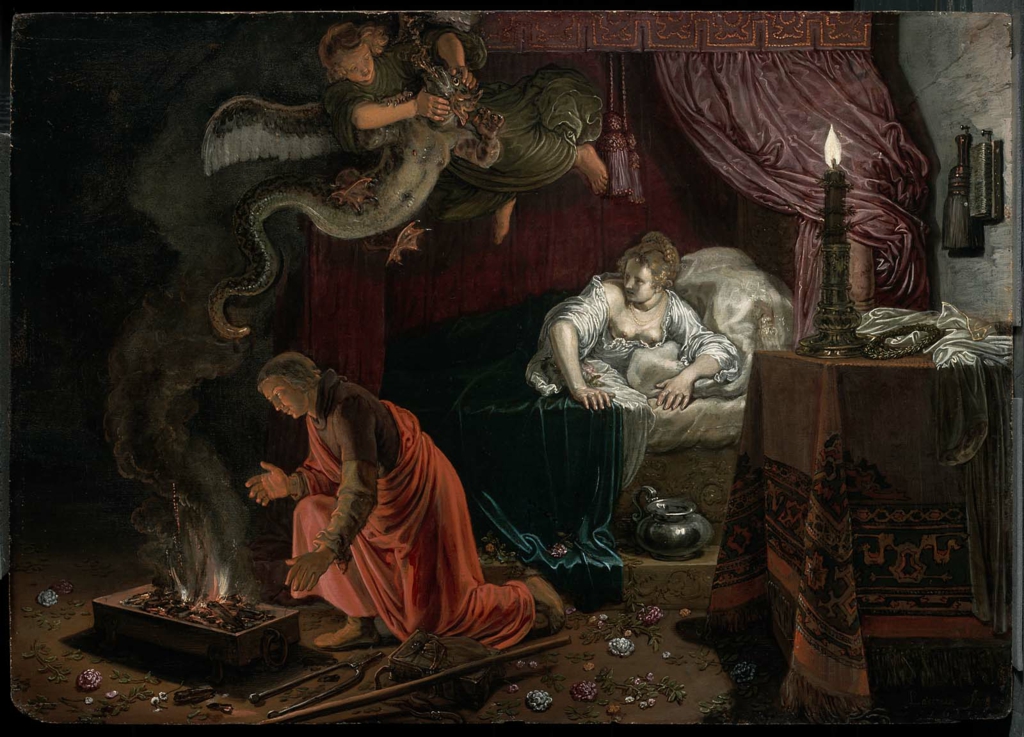
One of the earliest stories about Asmodeus is found in the Book of Tobit, an apocryphal text that is part of the Catholic and Orthodox canons of the Bible. The Book of Tobit tells the story of Tobit, a righteous Israelite who lived in exile in Nineveh after the Assyrian conquest. Tobit had a son named Tobias, who was sent by his father to collect a debt from a relative in Media. On his way, Tobias was accompanied by a mysterious stranger named Azariah, who was actually the angel Raphael in disguise.
In Media, Tobias met Sarah, the daughter of Raguel, who was also a relative of Tobit. Sarah was beautiful and virtuous, but she had a terrible problem: she was cursed by Asmodeus, who killed every man who married her on their wedding night. Sarah had already lost seven husbands in this way, and she was despised by her family and neighbors as a bringer of death. She was so miserable that she prayed to God for death.
However, God heard her prayer and sent Raphael to help her. Raphael also arranged for Tobias to marry Sarah, as they were destined to be together. On their wedding night, Raphael told Tobias to burn the heart and liver of a fish that he had caught earlier in their journey.
“The demon, repelled by the odor of the fish, fled into Upper Egypt; Raphael pursued him there and bound him hand and foot.”
– Book of Tobit 8:3
The smoke from the fish drove away Asmodeus, who fled to Egypt. Raphael then followed him and bound him there.
Asmodeus in the Testament of Solomon
Another famous story about Asmodeus is found in the Testament of Solomon, a pseudepigraphical text that claims to be the memoirs of King Solomon, the son of David and the wisest of all men. The Testament of Solomon tells how Solomon was given a ring by God that had the seal of God engraved on it. The ring gave Solomon the power to command all the demons and spirits in the world. Solomon used this power to force the demons to help him build the Temple in Jerusalem, which was dedicated to God.
Among the demons that Solomon summoned and interrogated was Asmodeus, who appeared as a fearsome creature with three heads: one like a bull, one like a man, and one like a ram. He also had a serpent’s tail, webbed feet, and flaming breath. He rode on a dragon and carried a lance and a banner. He was the first and foremost among the demons under the rule of Amaymon, one of the four kings of the cardinal directions.
“My constellation (is like an animal which) reclines in its den in heaven; some men call me the Great Bear, but others the Offspring of a Dragon. Moreover, a smaller constellation accompanies my constellation, for the high position and throne of my father is always in the sky. So do not ask me so many things, Solomon, for eventually your kingdom will be divided. This glory of yours is temporary. You have us to torture for a little while; then we shall disperse among human beings again with the result that we shall be worshiped as gods because men do not know the names of the angels who rule over us.”
– Testament of Solomon 5:4-5
When Solomon asked Asmodeus about his name and activities, he replied that he was called Asmodeus by some, but others called him the Great Bear or the Offspring of a Dragon. He said that he was always plotting against newlyweds, spoiling the beauty of virgins and making their hearts grow cold.
“Is always hatching plots against newlyweds; I mar the beauty of virgins and cause their hearts to grow cold”
– Testament of Solomon 5:7
When Solomon interrogated Asmodeus further, he learned that Asmodeus hated water and fish, which could repel him or harm him.
Asmodeus in Paradise Lost
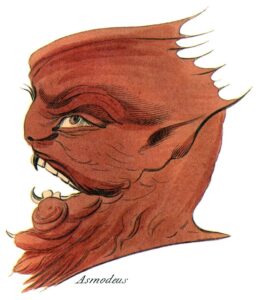
Asmodeus is a demon who appears briefly in Milton’s epic poem Paradise Lost, which retells the biblical story of the fall of humankind. He is mentioned in Book IV, when Satan, disguised as a serpent, approaches the Garden of Eden and sees Adam and Eve in their blissful state. Satan is filled with envy and malice, and compares himself to Asmodeus, who was also driven by lust and jealousy.
Better pleased
– Paradise Lost Book iv. 167-71
Than Asmodeus with the fishy fume
That drove him, though enamoured, from the spouse
Of Tobit’s son, and with a vengeance sent
From Media post to Egypt, there fast bound.
In this verse, Milton refers to Asmodeus to illustrate Satan’s wickedness and frustration. Satan is tormented by his own desire for Eve, who is rightfully married to Adam. He also knows that he cannot defeat God, who is the creator and ruler of all things. He is better pleased with his evil scheme than Asmodeus was with the fishy fume that repelled him from Sarah, his object of lust. Asmodeus was also punished by God, who sent him from Media to Egypt, where he was bound by an angel. Milton uses this comparison to show how Satan and Asmodeus are both rebels against God’s order and justice, and how they both suffer the consequences of their actions.
Asmodeus: The Demon in Modern Magick
One of the most influential sources on Asmodeus in modern times is the Dictionnaire Infernal (Infernal Dictionary), a book by Collin de Plancy that was first published in 1818. The book is an encyclopedia of demons and other supernatural beings, based on various sources from different traditions and periods. The book contains descriptions, illustrations, anecdotes, legends, and classifications of hundreds of demons, including Asmodeus.
According to de Plancy, Asmodee (as he spelled it) was a destroying demon and superintendent of gambling houses. He said that he was also called Chammadai or Sydonai by some. He said that he was possibly the same as Samael, the angel of death in Jewish lore. He said that he was employed by Solomon in building the Temple, but then tried to dethrone him by his magic. He also said that he was the serpent who seduced Eve in the Garden of Eden, and that he was the father of Cain, the first murderer.
De Plancy also provided an illustration of Asmodee, based on the description by Johann Wier, a 16th-century physician and occultist. Wier wrote a book called Pseudomonarchia daemonum (False Monarchy of Demons), which was a critique and a parody of the grimoires, or books of magic, that were popular at the time. Wier claimed to have access to a secret manuscript that listed 69 demons and their seals, ranks, powers, and weaknesses. Among them was Asmoday, who was said to be the king of demons under Amaymon.
Wier described Asmoday as having three heads: one of a bull, one of a man, and one of a ram. He also had a serpent’s tail, webbed feet, and flaming breath. He rode on a dragon and carried a lance and a banner. He could teach geometry, arithmetic, astronomy, and mechanics. He could also give rings that made one invisible, find hidden treasures, and control other spirits. However, he warned that Asmoday was very cunning and deceptive, and that he would try to trick the conjurer into worshipping him or giving him his soul.
Sidonay, alias Asmoday, a great king, strong and mightie, he is seene with three heads, whereof the first is like a bull, the second like a man, the third like a ram, he hath a serpents taile, he belcheth flames out of his mouth, he hath feete like a goose, he sitteth on an infernall dragon, he carrieth a lance and a flag in his hand, he goeth before others, which are under the power of Amaymon. When the conjuror exerciseth this office, let him be abroad, let him be warie and standing on his feete; if his cap be on his head, he will cause all his dooings to be bewraied, which if he doo not, the exorcist shalbe deceived by Amaymon in everie thing. But so soone as he seeth him in the forme aforesaid, he shall call him by his name, saieng; Thou art Asmoday; he will not denie it, and by and by he boweth downe to the ground; he giveth the ring of venues, he absolutelie teacheth geometrie, arythmetike, astronomie, and handicrafts. To all demands he answereth fullie and trulie, he maketh a man invisible, he sheweth the places where treasure lieth, and gardeth it, if it be among the legions of Amaymon, he hath under his power seventie two legions.
– Pseudomonarchia daemonum – Johann Wier (1583)
Wier’s book was later used as a source by S.L. MacGregor Mathers, one of the founders of the Hermetic Order of the Golden Dawn, a secret society that practiced ceremonial magic and occultism in the late 19th and early 20th centuries. Mathers translated and edited Wier’s book and published it as The Goetia: The Lesser Key of Solomon the King. The Goetia is one of the most famous and influential grimoires in the history of Western occultism. It contains a list of 72 demons that Solomon allegedly controlled with his ring, along with their seals, descriptions, and instructions on how to summon them.
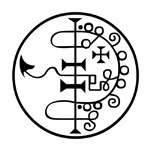
The Thirty-second Spirit is Asmoday, or Asmodai. He is a Great King, Strong, and Powerful. He appeareth with Three Heads, whereof the first is like a Bull, the second like a Man, and the third like a Ram; he hath also the tail of a Serpent, and from his mouth issue Flames of Fire. His Feet are webbed like those of a Goose. He sitteth upon an Infernal Dragon, and beareth in his hand a Lance with a Banner. He is first and choicest under the Power of AMAYMON, he goeth before all other. When the Exorcist hath a mind to call him, let it be abroad, and let him stand on his feet all the time of action, with his Cap or Headdress off; for if it be on, AMAYMON will deceive him and call all his actions to be bewrayed. But as soon as the Exorcist seeth Asmoday in the shape aforesaid, he shall call him by his Name, saying: “Art thou Asmoday?” and he will not deny it, and by-and-by he will bow down unto the ground. He giveth the Ring of Virtues; he teacheth the Arts of Arithmetic, Astronomy, Geometry, and all handicrafts absolutely. He giveth true and full answers unto thy demands. He maketh one Invincible. He showeth the place where Treasures lie, and guardeth it. He, amongst the Legions of AMAYMON governeth 72 Legions of Spirits Inferior. His Seal is this which thou must wear as a Lamen upon thy breast, etc.
– The Goetia – S. L. MacGregor Mathers (1904)
Mathers followed Wier’s description of Asmoday, but changed his name to Asmoday. He also added some details from other sources, such as the Book of Tobit and the Sacred Magic of Abra-Melin the Mage. The latter is another grimoire that claims to reveal the secrets of Solomon’s magic, including his ring and his method of binding demons. According to this book, Asmoday was one of the eight sub-princes of hell, who served under Lucifer. He was also one of the chief demons who opposed Moses during the Exodus from Egypt.
Asmodee: Usually written “Asmodeus,” and sometimes “Chashmodai”. Derived by some from the Hebrew word “Asamod,” to destroy or exterminate; and by others from the Persian verb “Azmonden,” = to tempt, to try or prove. Some Rabbins say that Asmodeus was the child of the incest of Tubal-Cain and his sister Naafrfah. Others say that he was the Demon of impurity. Others again relate that he was employed by Solomon in the building of the Temple at Jerusalem; that he then attempted to dethrone Solomon, to put himself in his place; but that the King vanquished him and the Angel Gabriel chased him into Egypt, and there bound him in a Grotto. The Rabbins say that when Asmodeus was working at the building of the Temple, he made use of no metal tool; but instead of a certain stone which cut ordinary stone as a diamond will glass.
– Sacred Magic of Abra-Melin the Mage – SL MacGregor Mathers (1898)
Mathers’ version of The Goetia has been widely used by many modern occultists and magicians, who have tried to evoke or invoke Asmoday and other demons for various purposes. Some have claimed to have succeeded in contacting Asmoday and obtaining his knowledge or assistance. Others have warned against the dangers and risks of dealing with such powerful and malevolent entities.
Finally, Asmodeus is one of the demons featured in The Magus, a handbook of occult and ceremonial magic compiled by Francis Barrett and published in 1801. The Magus contains a section on the heads of evil demons, or vessels of wrath, which are the enemies of the good angels and the human soul.
Conclusion
In this article, we have looked at how Asmodeus, a demon of wrath, lust, and deception, has been portrayed and used in different religious and literary sources. We have followed his origins from the Persian Aeshma-deva, who was a source of evil and harm in Zoroastrianism, to the Jewish and Christian traditions, where he was linked to the Book of Tobit, the Testament of Solomon, and Paradise Lost. We have also explored his features and functions in occult and ceremonial magic.
Asmodeus is a multifaceted figure, who reflects the fears and fantasies of different times and contexts. He is one of the most enduring demons in history and continues to spark curiosity and imagination.
References:
- Almond, Philip C.. England’s First Demonologist: Reginald Scot and ‘The Discoverie of Witchcraft’. United Kingdom, Bloomsbury Publishing, 2011.
- Avesta. Translated by James Darmesteter. Sacred Books of the East, vol. 4. Oxford University Press, 1880.
- Becking, Bob, Pieter W. Van Der. Horst, and Karel Van Der. Toorn. “Abaddon.” Dictionary of Deities and Demons in the Bible: Second Extensively Revised Edition. 2nd ed. Leiden: Brill, 1999.
- Book of Tobit. Translated by Robert J. Littman. Society of Biblical Literature, 2008.
- de Plancy, Collin. Dictionnaire Infernal. 6th ed., Henri Plon, 1863.
- Langton, Edward. Satan, a Portrait: A Study of the Character of Satan Through All the Ages. United States, Folcroft Library Editions, 1974.
- Mathers, S.L. MacGregor (ed.). The Goetia: The Lesser Key of Solomon the King . Weiser Books, 1995.
- Milton, John. Paradise Lost. United Kingdom, W.W. Norton, 2005.
- Russell, Jeffrey Burton. The Devil: Perceptions of Evil from Antiquity to Primitive Christianity. United Kingdom, Cornell University Press, 1987.
- Sacred Magic of Abra-Melin the Mage. Translated by S.L. MacGregor Mathers. Dover Publications, 1975.
- Scot, Reginald, and Nicholson, Brinsley. The Discoverie of Witchcraft. Being a Reprint of the First Edition. United States, Forgotten Books, 2018.
- Wier, Johann. Pseudomonarchia daemonum.

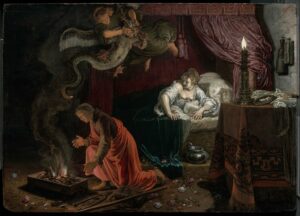
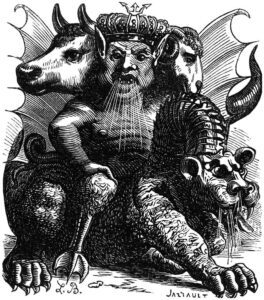
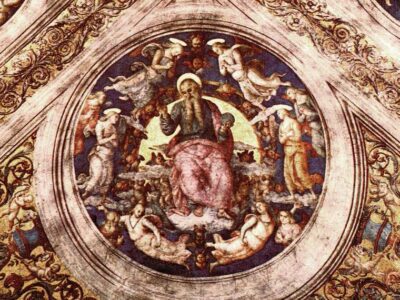
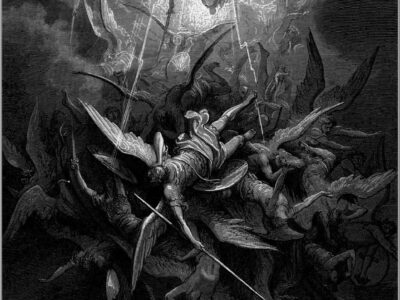
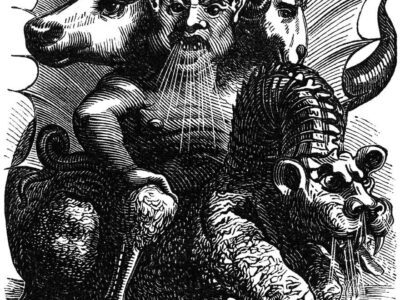
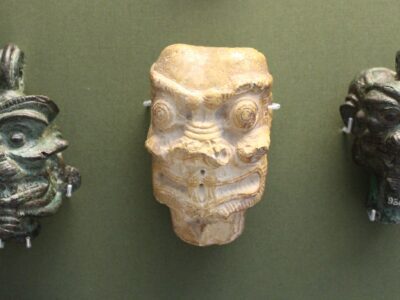
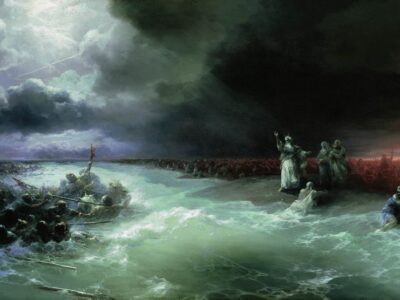
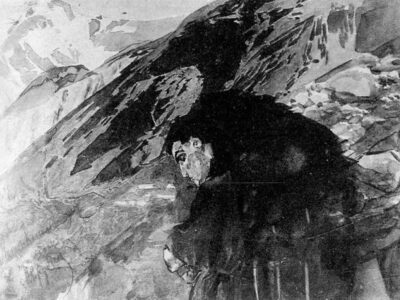
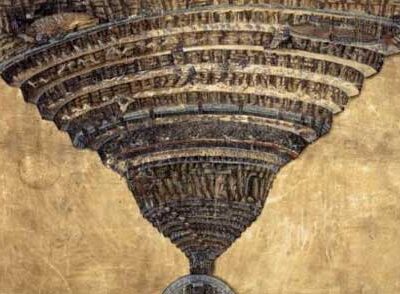
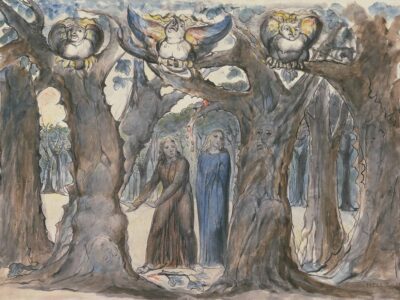
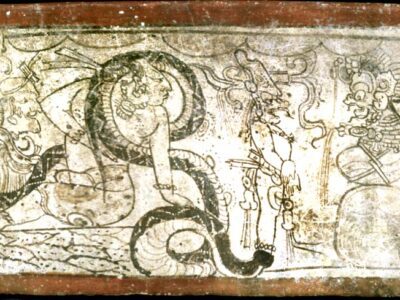
 Pazuzu: How an Ancient Wind Demon Became a Horror Icon
Pazuzu: How an Ancient Wind Demon Became a Horror Icon